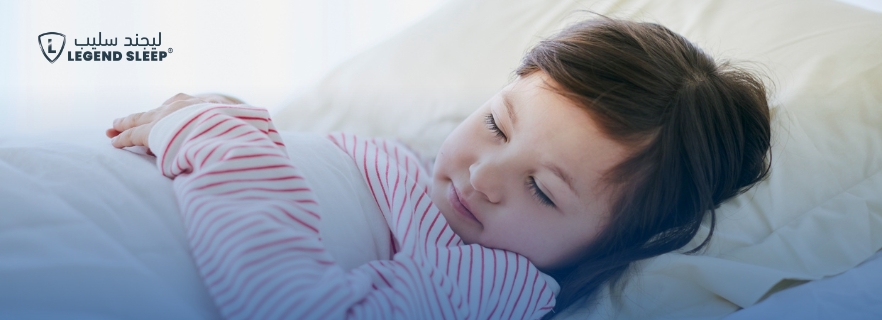
Sleep Like a Dream: How to Choose the Perfect Children’s Mattress
Choosing a children’s mattress isn’t just about “soft vs. firm.” The right mattress supports healthy growth, safe sleep, and fuss-free nights—while surviving spills, bedtime stories, and the inevitable trampoline sessions. Here’s a parent-friendly guide that translates mattress jargon into simple, confident choices.
1) Safety First: What “Safe” Actually Means
- A snug fit: In a crib or toddler bed, the mattress should fit tightly with no more than a two-finger gap around the edges. Gaps are unsafe and disrupt sleep.
- Stable surface: For infants (under 12 months), choose a firm, flat surface that holds its shape under weight. Soft, sink-in surfaces are not appropriate for babies.
- Low-odor, breathable design: Look for low-odor foams and breathable covers to keep the sleep space fresh and comfortable.
- Zippered covers (hidden or child-safe): If you choose a removable cover, make sure the zipper is secure and out of reach.
Quick pick: See our curated Children’s Mattress
options designed with snug fit, safe support, and easy-clean covers in mind.
2) The Right Firmness by Age
- Infants (0–12 months): Firm. The mattress should not visibly dip under baby’s weight.
- Toddlers (1–3 years): Medium-firm. Still supportive, but a little more giving for comfort and movement.
- Young kids (4–7 years): Medium to medium-firm, depending on sleep position. Back/stomach sleepers do better with a bit more firmness; side sleepers may prefer slightly plusher comfort.
- Older kids (8–12 years): Medium or medium-firm—adjust for body weight and preference. Heavier kids often benefit from medium-firm for better alignment.
Tip: If your child frequently flips positions, medium-firm is the most adaptable choice.
3) Ventilation & Temperature Control
Kids run warm. Mattresses that trap heat can lead to sweaty, restless nights.
- Breathable covers: Knit fabrics and airy quilting help moisture escape.
- Open-cell foams or airflow channels: These promote ventilation so heat doesn’t build up.
- Dual-side designs (optional): Some kids’ mattresses offer a firmer infant side and a slightly plusher toddler side—convenient and great value.
4) Size & Fit (Crib, Toddler Bed, Kids’ Beds)
- Crib & Toddler beds: Always match the size recommended by your crib/bed manufacturer and check the gap test above. Thickness should allow a safe rail height (don’t over-thicken).
- Kids’ beds (single/twin, full, etc.): Select a size that suits the room and your child’s growth. If your child is tall for their age, consider sizing up sooner to avoid outgrowing the bed within a year.
5) Materials: What’s Inside Matters
Each construction has pros; focus on support + breathability:
- High-density foam: Consistent support, great motion control, usually lighter (easier to lift and change sheets). Look for responsive—not mushy—foam.
- Pocket springs (individually wrapped coils): Excellent airflow, targeted support, and edge stability (helpful for story time at the bed’s edge).
- Hybrid (foam + pocket springs): A balanced feel—supportive core with a comfy top for pressure relief and airflow.
- Latex (for older kids): Naturally buoyant and breathable with fast response, ideal for combination sleepers. (Typically not used for newborns.)
Edge support matters when kids sit on the side of the bed; pocket springs or reinforced foam rails help the mattress keep its shape.
6) Pressure Relief vs. Support
Children’s spines are developing—so the mattress must align the body while reducing pressure at the shoulders and hips.
- Back/stomach sleepers: Prioritize alignment—medium-firm often works best.
- Side sleepers: A touch more cushioning at the shoulder and hip can improve comfort—medium with a responsive comfort layer is ideal.
- Combo sleepers: Look for balanced hybrids or responsive foams that adapt quickly as your child moves.
7) Cleanability & Durability (Because “Life Happens”)
- Removable, washable covers: A lifesaver for spills and accidents.
- Waterproof mattress protectors: Add one from day one to prevent stains and odors (protectors should be breathable, not plasticky).
- Rotate regularly: Every 1–3 months for the first year, then every 3–6 months (unless the mattress is clearly labeled “no-flip/no-rotate”).
- No jumping: Fun, yes—but it stresses springs, foams, and seams, shortening mattress life.
- Ventilate: Let the bed air out weekly when changing sheets.
8) Signs It’s Time for an Upgrade
- Visible dips or lumps
- Your child wakes with back/neck discomfort
- Frequent night sweats despite breathable bedding
- Edge collapse (sliding off the side)
- Growth spurts mean feet are brushing the end of the bed
If you’re seeing one or more of these, consider stepping up to a new size or a more supportive model.
9) Budget & Value (Spend Smart)
- Prioritize the core: A strong support system (quality foam density or pocket coils) beats fancy quilting that flattens quickly.
- Choose features that matter: Breathable cover, easy cleaning, and proper firmness by age deliver the biggest comfort and longevity gains.
- Plan for growth: If your child is close to sizing up, it can be more cost-effective to move directly to the next size.
Quick Buyer’s Checklist
- Fits the crib/bed snugly (two-finger gap or less)
- Firm for infants; medium-firm for toddlers; medium to medium-firm for older kids
- Breathable cover + good airflow
- Supportive core (quality foam density or pocket springs)
- Removable/washable cover or a breathable protector
- Rotatable (or clearly labeled otherwise)
Recommended: Children’s Mattress by Legend Sleep
Explore our handpicked options built for safe support, breathable comfort, and easy care:
Or start from our homepage for more sleep solutions: legendsleepsa.com
FAQ
Q1: How firm should a baby’s mattress be?
For infants, choose firm and flat. It should not sink under your hand, helping maintain a stable sleep surface.
Q2: My toddler rolls a lot—what feel is best?
Medium-firm is a versatile choice that supports alignment while staying comfy as they change positions.
Q3: Do I need a waterproof protector?
Yes—use a breathable waterproof protector to guard against spills and accidents without trapping heat.
Q4: How often should I replace a kids’ mattress?
Typically every 6–8 years, or earlier if there are dips, poor sleep quality, or a size upgrade is needed






